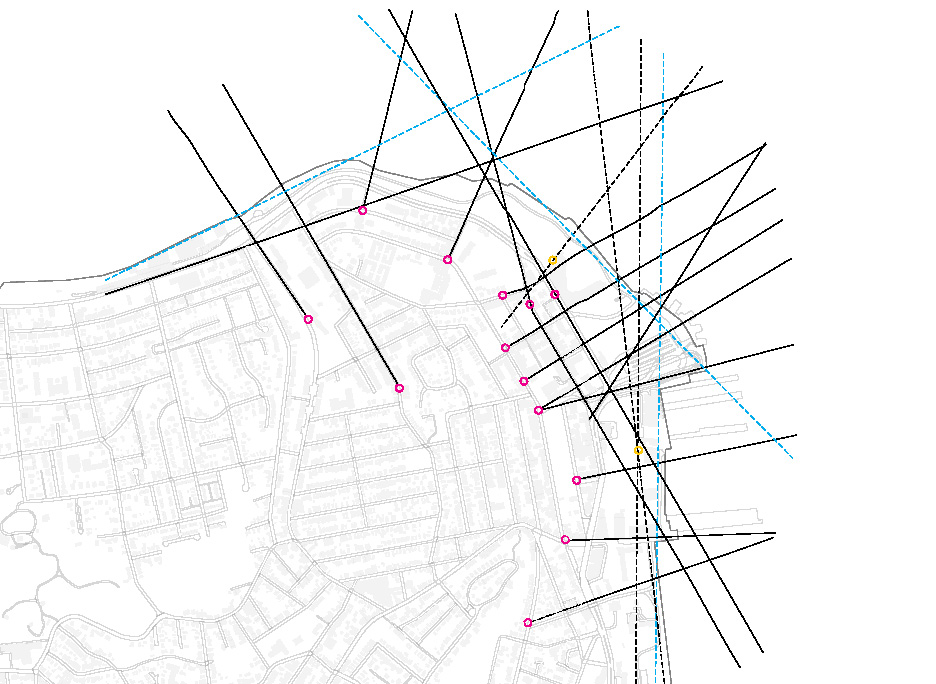Urban Web [Staten Island]
GSAPP, Columbia University
Collaboration: Danila Babko-Malyi . Nathalie Guedes . Priscilla Wood . Matthew Clapper
Critic: Earl Jackson
GSAPP, Columbia University
Collaboration: Danila Babko-Malyi . Nathalie Guedes . Priscilla Wood . Matthew Clapper
Critic: Earl Jackson


An urban redevelopment project on the waterfront of St. George, Staten Island. The project aims to connect the existing upland community of St. George to the waterfront with a web of mixed-use program, landscape, and circulation. The web will have a positive impact on the community’s economy by encouraging commercial development to extend down to the waterfront supporting a new fresh food network that will, in turn, improve the community’s health and well being.
The current food desert situation in Staten Island highlights several of the major problems that currently exist there and contribute to an undesirable quality of life for residents of St. George. St. George is located in the highest zones of: supermarket need, lack of fresh food, insufficient fruit and vegetable consumption, and diabetes/obesity. This is because the current national and international food distribution system is inefficient and only getting worse, due to economics, transportation capacity, farm land availability, and demand. Through localizing agriculture, there would become more job opportunities for St. George residents, decrease their health issues, remove the current food desert situation, and give them an increased quality of life. By creating a continuous open waterfront based around local agriculture and recreation, the existing site separations would be broken and would create areas that would promote both health and community interaction/involvement, as well as give tourists something to do when they arrive on the ferry. Tourism would be able to act as a catalyst to educate a larger audience about the benefits of this system. A new more efficient transportation network would serve residents, surrounding boroughs, and tourists better. This network will promote activity by having more destination points than just one, like there currently is. The network will also reduce the need for St. George residents to commute to work, while decreasing the commuting time for the remaining Staten Island residents. Because of the problematic results that come along with the importation of national and international food this project will try and solve the reliance the food network has on transportation and the resulting increase in cost due to those transportation fees. The development will provide jobs for local residents, giving the place a sense of identity and educating people, both locally and who come to visit on a better more sustainable way to live.
The current food desert situation in Staten Island highlights several of the major problems that currently exist there and contribute to an undesirable quality of life for residents of St. George. St. George is located in the highest zones of: supermarket need, lack of fresh food, insufficient fruit and vegetable consumption, and diabetes/obesity. This is because the current national and international food distribution system is inefficient and only getting worse, due to economics, transportation capacity, farm land availability, and demand. Through localizing agriculture, there would become more job opportunities for St. George residents, decrease their health issues, remove the current food desert situation, and give them an increased quality of life. By creating a continuous open waterfront based around local agriculture and recreation, the existing site separations would be broken and would create areas that would promote both health and community interaction/involvement, as well as give tourists something to do when they arrive on the ferry. Tourism would be able to act as a catalyst to educate a larger audience about the benefits of this system. A new more efficient transportation network would serve residents, surrounding boroughs, and tourists better. This network will promote activity by having more destination points than just one, like there currently is. The network will also reduce the need for St. George residents to commute to work, while decreasing the commuting time for the remaining Staten Island residents. Because of the problematic results that come along with the importation of national and international food this project will try and solve the reliance the food network has on transportation and the resulting increase in cost due to those transportation fees. The development will provide jobs for local residents, giving the place a sense of identity and educating people, both locally and who come to visit on a better more sustainable way to live.



St. George transportation research

Staten Island transportation research